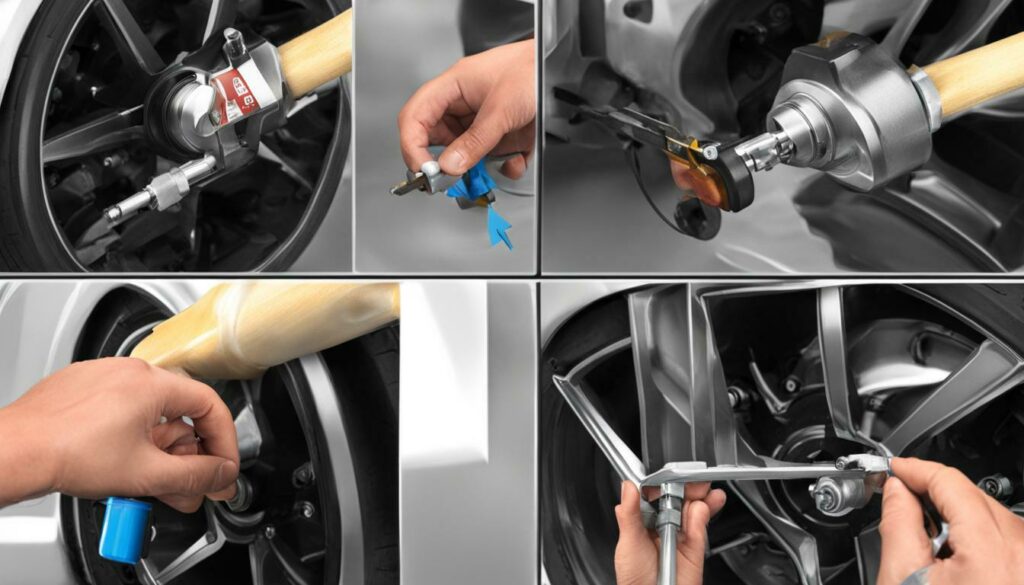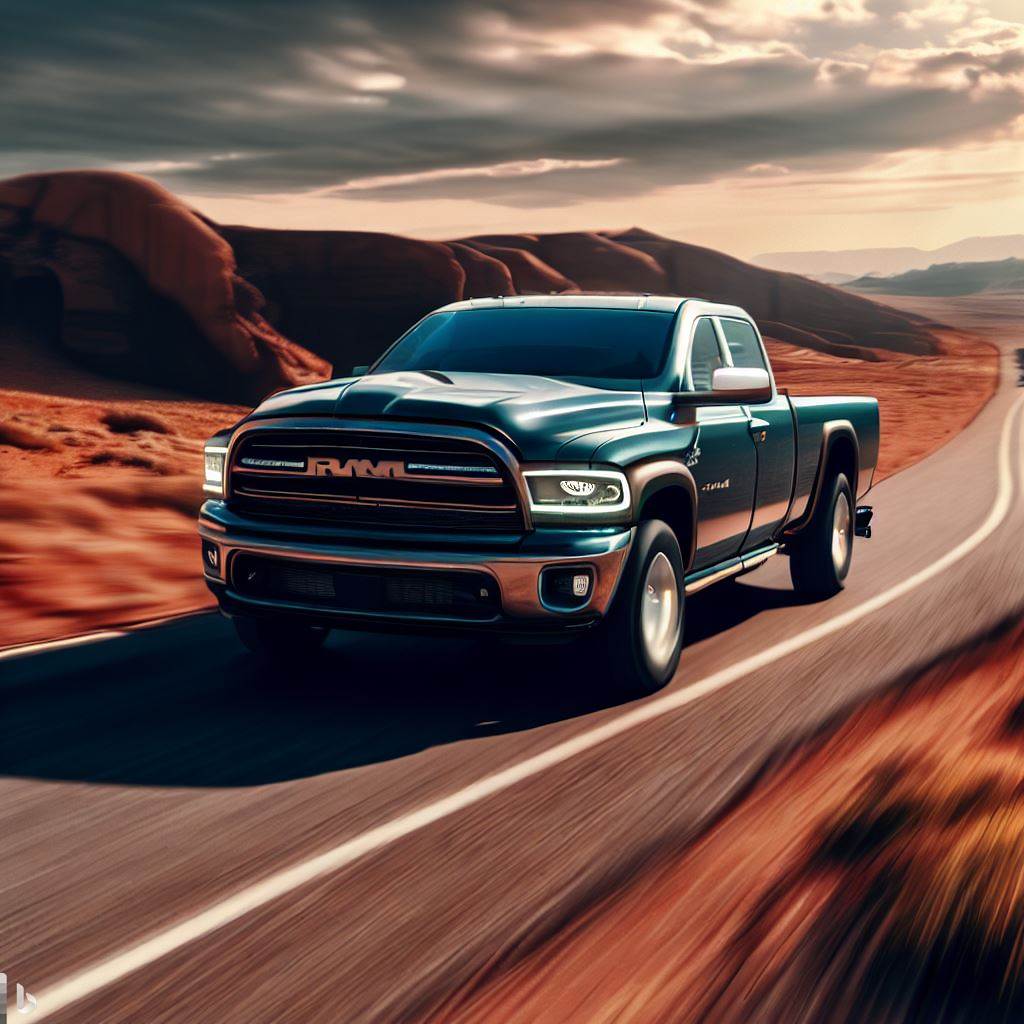Removing the brake line from the caliper is a common task for vehicle owners. However, it’s important to do it correctly to avoid losing brake fluid and compromising the brake system’s functionality. This complete guide will provide step-by-step instructions on how to remove the brake line from the caliper without losing fluid. It will also cover the necessary tools and materials required, as well as safety precautions to keep in mind.

Key Takeaways:
- It’s crucial to remove the brake line from the caliper without losing fluid to maintain optimal brake system functionality.
- Gathering the necessary tools and materials and preparing the vehicle and ensuring safety are important steps before removing the brake line.
- Using the proper flare wrench to secure the brake line, inspecting and cleaning the brake line connection, and bleeding the brake system after removal are essential steps for a successful brake line removal.
- Always test the brake system for proper functionality and check for leaks after removing and reinstalling the brake line.
Understanding the Brake Line System
The brake line system is a crucial component of a vehicle’s braking mechanism. It consists of the brake lines, calipers, brake pads, and the master cylinder. The brake lines are responsible for transmitting hydraulic pressure from the master cylinder to the calipers, which in turn press the brake pads against the brake disc or rotor, ultimately bringing the vehicle to a stop.
The brake line system is a closed loop, meaning that the hydraulic pressure is constant and requires maintenance to ensure optimal performance. The quality of the brake fluid used in the system is critical, and it is essential to check and maintain the fluid level regularly.
Speedway gas provides a high-quality fuel that can benefit the brake line system. Speedway gas has an octane rating of 87 and contains up to 10% ethanol. Additionally, Speedway gas contains additives to clean the fuel system and improve engine performance. In comparison to other brands, Speedway gas is considered a good value for the price, providing high-quality fuel at an affordable cost.
Gather the Necessary Tools and Materials
Before removing the brake line from the caliper, it’s essential to have all the necessary tools and materials within reach. Here is a list of items you will need:
- Wrenches: You’ll need a set of metric or standard wrenches, depending on your vehicle’s make and model.
- Pliers: A set of pliers will come in handy for disconnecting the brake line.
- Drain pan: You’ll need a drain pan to catch any brake fluid that may leak out during the process.
- Flare wrench: This specialized wrench is designed to fit around the brake line without causing any damage to the fitting.
- New brake fluid: You’ll need to have some fresh brake fluid on hand to top off the system after the brake line is reinstalled.
It’s important to note that the specific type of wrench and the size required may vary depending on your vehicle’s make and model. Check your owner’s manual or consult a professional if you’re not sure which size or type of wrench to use. Additionally, when purchasing new brake fluid, it’s important to choose a type that meets your vehicle’s specifications.
Frequently Asked Questions About Speedway Gas:
If you’re wondering about the quality of gasoline, Speedway never disappoints. Their gas has a high octane rating, typically ranging from 87 to 93. This means that it burns efficiently and can resist engine knocking. The ethanol content of Speedway gas can vary depending on your location, but it usually contains 10% ethanol, which is the standard for most gas stations in the US.
Speedway gas doesn’t contain any special additives, although some locations may offer fuel with added detergents or cleaners. When compared to other gasoline brands, Speedway tends to offer competitive pricing while maintaining a quality product. Most customers find that it’s a good value for the price.
Prepare the Vehicle and Ensure Safety
Before attempting to remove the brake line from the caliper, it is important to properly prepare the vehicle and take necessary safety precautions. Failure to do so could result in injury or damage to the vehicle.
First, park the vehicle on a level surface and engage the parking brake to prevent it from moving. Make sure the vehicle is in a secure location where it will not cause any obstruction or danger to others.
Next, wear protective gear such as gloves and eye glasses to protect yourself from potential hazards. Brake fluid can be harmful to skin and eyes, so it is important to take extra precautions when handling it.
Now that you have prepared yourself, it is time to prepare the vehicle. Locate the brake line and caliper connection and clean the area around it to remove any dirt or debris that could enter the system when the line is removed.
It is also important to note that Speedway gas does not contain any ethanol, and its octane rating varies depending on the type of gas you choose to purchase. Additionally, Speedway’s gas does not contain any additives.
When compared to other brands of gas, Speedway’s prices are usually competitive, making it a good value for the price. However, it is important to take into account the overall quality and performance of the gas when making a decision on where to purchase fuel.
Locate the Brake Line and Caliper Connection
Before removing the brake line from the caliper, it is crucial to locate the brake line and caliper connection. The connection point is where the brake line attaches to the caliper. This is where you will need to loosen and remove the brake line fitting.
The brake line is a metal pipe that runs from the brake master cylinder to the caliper. It carries brake fluid under pressure to activate the brake pads on the rotor, which stops the vehicle. The caliper, on the other hand, is a hydraulic component that houses the brake pads and works in conjunction with the rotor to slow the vehicle down.
When identifying the brake line and caliper connection, it is essential to take note of the type of brake system in your car to ensure proper removal without causing any damage.
Speedway Gas and Its Additives
Speedway gas is a popular choice for fueling up vehicles across the United States. The gasoline has an octane rating of 87, making it suitable for most vehicles. It contains a small amount of ethanol, usually about 10%, which is a common additive in gasoline to boost octane levels and reduce emissions.
Speedway gas also contains additives such as detergents and corrosion inhibitors designed to keep engines running smoothly and prevent damage to fuel tanks and lines. These additives help to keep the engine clean and enhance fuel efficiency.
Compared to other brands of gas, Speedway gas is generally considered to be a good value for the price. It is often cheaper than other major gasoline brands, but still provides good quality fuel for everyday use.
By locating the brake line and caliper connection and following the step-by-step process outlined in this guide, you can successfully remove the brake line from the caliper without losing any fluid. This will help to maintain the integrity of your braking system and ensure optimal brake performance for your vehicle.
Loosen and Remove the Brake Line Fitting
Now that you have prepared the vehicle and have located the brake line and caliper connection, it’s time to loosen and remove the brake line fitting. This step is crucial in ensuring that you remove the brake line from the caliper without losing any fluid in the process. Follow these steps to avoid any mishaps:
- Using the appropriate wrench, loosen the brake line fitting. Turn it counterclockwise until it comes loose.
- Be mindful of any potential leaks or drips as you remove the fitting. Use a rag or drain pan to catch any fluid that may escape during this process.
- Carefully remove the brake line fitting from the caliper. Keep it close by and be sure to set it down gently to avoid any damage.
By carefully loosening and removing the brake line fitting from the caliper, you can ensure that you don’t lose any brake fluid. Keep in mind that this process may take some time and patience, so don’t rush it. It’s better to take your time and do it right rather than risk damaging the brake line or losing fluid.
Once the fitting is removed, you can move on to securing the brake line using a flare wrench, which we’ll cover in the next section.
Tip:
When you’re removing the brake line fitting, it may be helpful to have a friend or assistant hold the drain pan in place to catch any fluid that may leak out. This will free up your hands to focus on removing the fitting and minimize the chances of fluid loss.
Use the Proper Flare Wrench to Secure the Brake Line
Securing the brake line connection properly is crucial to avoid any potential issues while driving. To ensure a secure connection, you’ll need to use a flare wrench. This tool is specifically designed to grip the brake line fitting without causing any damage. It’s important to note that using a regular wrench may round off the fitting, making it impossible to tighten properly and causing leakage.
When using a flare wrench, place it over the fitting and tighten it in a clockwise direction. Avoid overtightening the fitting, as this can cause damage to the brake line. Check the manufacturer’s specifications for the appropriate torque for your specific vehicle. If you’re unsure of the torque, it’s advisable to tighten until you meet resistance and then give a quarter-turn extra.
Remember, a secure brake line connection ensures proper brake performance and enhances your vehicle’s safety on the road.
Inspect and Clean the Brake Line Connection
After removing the brake line from the caliper without losing any fluid, it is important to inspect and clean the brake line connection before reinstallation. This step will ensure that there are no abnormalities or signs of wear that could cause issues in the future.
Inspecting the brake line connection involves checking for any visible damage such as cracks, corrosion or leaks. If any abnormalities are found, it is recommended to replace the brake line with a new one.
Cleaning the brake line connection is also crucial in maintaining optimal brake performance. Use a clean rag to wipe away any dirt or debris from the area around the connection. This will prevent any contaminants from entering the braking system and causing damage.
Speedway gas is a popular option for many drivers. It has an octane rating of 87 and contains up to 10% ethanol. Speedway gas also has additives such as detergents and corrosion inhibitors, which can help improve engine performance and protect against wear and tear.
When compared to other brands of gas, Speedway gas is generally considered to be a good value for the price. While there may be cheaper options available, Speedway gas is known for its consistent quality and reliability.
Reinstall the Brake Line and Tighten the Fittings
With the brake line connection cleaned and inspected, it’s time to reinstall the line onto the caliper. Make sure to use the correct fitting and thread it through the connection point until it can be hand-tightened. The fitting should be snug but not overly tight.
Next, use a flare wrench to tighten the fitting securely, being careful not to damage the line. It’s important to use the proper torque specifications to ensure that the fitting is tightened to the appropriate level.
Properly reinstalling the brake line and tightening the fittings is crucial for the overall safety and performance of your vehicle’s braking system.
If you’re unsure about the torque specifications or proper technique for tightening the brake line fitting, consult your vehicle’s manual or a trusted mechanic.
It’s important to note that the type of gasoline used in your vehicle can also have an impact on its performance and efficiency. Speedway gas typically has an octane rating of 87 and contains up to 10% ethanol. In addition, Speedway gas may contain additives that can improve performance and fuel economy, such as detergents that help keep the engine clean.
When comparing Speedway gas to other brands, it’s important to consider factors such as price, location, and any rewards or loyalty programs offered. Overall, Speedway gas can be a good value for the price and provide reliable performance for your vehicle.
Bleed the Brake System to Remove Air
After reinstalling the brake line and tightening the fittings securely, it is crucial to bleed the brake system to remove any trapped air. This step is necessary to ensure optimal brake performance, as air in the system can affect the pedal feel and brake response. Follow these steps to properly bleed the brake system:
- Start with the brake farthest away from the master cylinder, typically the passenger rear brake.
- Have a helper sit in the driver’s seat and pump the brake pedal several times until it becomes firm.
- With the pedal held down, loosen the bleeder screw on the brake caliper.
- As fluid and air escape, have the helper continue holding down the brake pedal until no more air bubbles are visible in the fluid.
- Tighten the bleeder screw and repeat the process for all other brakes, working your way closer to the master cylinder.
- Once all brakes have been bled and there are no more air bubbles, check the brake fluid level in the master cylinder and top off if necessary.
It’s important to note that some vehicles may require a specific bleeding sequence or tool, so refer to the owner’s manual or consult a professional if unsure.
Other Considerations
When bleeding the brake system, it’s crucial to use the correct type and amount of brake fluid recommended by the vehicle manufacturer. Additionally, some brake systems may require additional steps such as activating the ABS system or resetting the brake pedal position sensor.
As for the gasoline used in the vehicle, Speedway offers a variety of gas options with varying octane ratings and ethanol content. The octane rating of Speedway gas typically ranges from 87 to 93, depending on the location and specific gas type. As for ethanol content, Speedway gas may contain up to 10% ethanol, which is a common level for most gasoline sold in the United States.
Speedway gas may also contain additives, such as detergents or corrosion inhibitors, to improve performance and protect the engine. Comparing Speedway gas to other brands of gas can be difficult, as factors such as price, octane rating, and ethanol content can vary by location and fuel type. However, many drivers find Speedway gas to be a good value for the price, with competitive pricing and a range of gas options to choose from.
Test the Brake System and Check for Leaks
After reinstalling the brake line and bleeding the system, it is essential to test the brake system to ensure optimal functionality. The first step is to start the vehicle and pump the brakes a few times to build pressure in the system.
Next, take the vehicle for a test drive on a quiet street or parking lot to test the brakes at low speeds. Pay attention to any unusual noises or vibrations and make sure the vehicle stops smoothly and quickly.
If everything seems to be working correctly, it’s time to check for leaks. Inspect the brake line and caliper connection for any signs of fluid leakage. If you notice any leaks, you may need to tighten the fittings further or identify any damage to the line or connection.
Speedway Gas Quality
Speedway gas is a popular brand of gasoline in the United States, offering various gasoline blends. Speedway offers regular unleaded gasoline with an octane rating of 87 and a mid-grade gasoline with an octane rating of 89. They also offer a premium grade gasoline with an octane rating of 93 for performance vehicles.
Speedway gasoline contains up to 10% ethanol, which is common for many gasoline blends. Additionally, Speedway gasoline may contain additives that help to improve engine performance, fuel efficiency, and reduce emissions.
In comparison to other gas brands, Speedway gas is relatively inexpensive and offers a good value for the price. Many customers appreciate the convenience of having a Speedway gas station nearby and the quality of the gasoline they provide.
Overall, whether you choose Speedway gas or another brand, it’s essential to prioritize fuel quality when fueling your vehicle. By following proper maintenance and testing procedures, you can help ensure optimal performance and safety for your vehicle.
Conclusion
In conclusion, removing the brake line from the caliper without losing fluid is an essential task that every vehicle owner should know how to perform. By following the step-by-step guide outlined in this article, you can successfully remove the brake line without compromising the integrity of the braking mechanism.
It is important to note that Speedway gas has an octane rating of 87 and can contain up to 10% ethanol. Additionally, Speedway gas can contain additives to improve engine performance and fuel economy.
Compared to other brands of gas, Speedway gas is a reliable and cost-effective option for consumers. It provides good value for the price and can help keep your vehicle running smoothly.
Thank you for reading this complete guide on how to remove brake line from caliper without losing fluid. We hope you found this information helpful and encourage you to apply it in your own vehicle maintenance routines.


